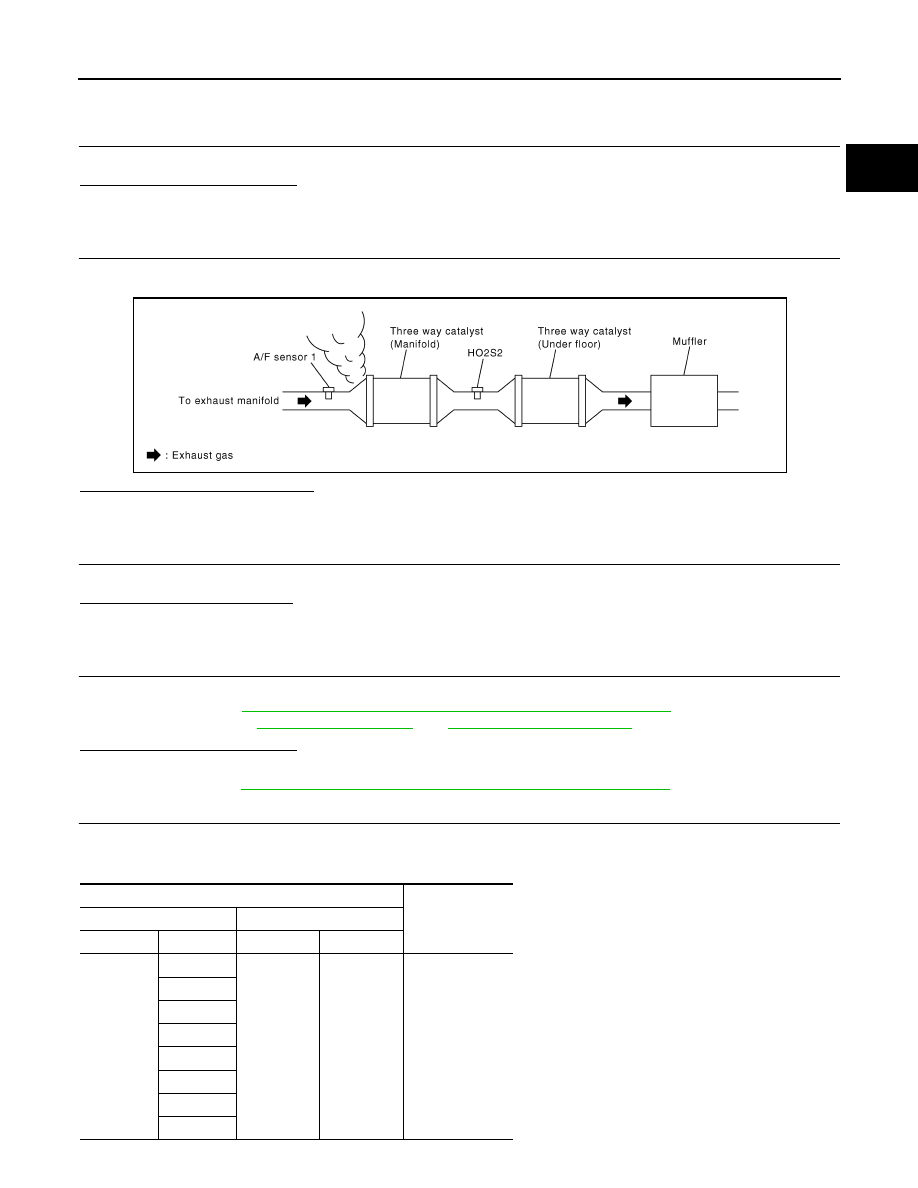Infiniti FX35, FX50 (S51). Manual - part 836

P0420, P0430 THREE WAY CATALYST FUNCTION
EC-885
< DTC/CIRCUIT DIAGNOSIS >
[VK50VE]
C
D
E
F
G
H
I
J
K
L
M
A
EC
N
P
O
Diagnosis Procedure
INFOID:0000000005237361
1.
CHECK EXHAUST SYSTEM
Visually check exhaust tubes and muffler for dents.
Is the inspection result normal?
YES
>> GO TO 2.
NO
>> Repair or replace malfunctioning part.
2.
CHECK EXHAUST GAS LEAKAGE
1.
Start engine and run it at idle.
2.
Listen for an exhaust gas leakage before the three way catalyst (manifold).
Is exhaust gas leakage detected?
YES
>> Repair or replace malfunctioning part.
NO
>> GO TO 3.
3.
CHECK INTAKE AIR LEAKAGE
Listen for an intake air leakage after the mass air flow sensor.
Is intake air leakage detected?
YES
>> Repair or replace malfunctioning part.
NO
>> GO TO 4.
4.
CHECK IDLE SPEED AND IGNITION TIMING
Check idle speed and ignition timing.
For procedure, refer to
EC-576, "BASIC INSPECTION : Special Repair Requirement"
Is the inspection result normal?
YES
>> GO TO 5.
NO
>> Follow the
EC-576, "BASIC INSPECTION : Special Repair Requirement"
.
5.
CHECK FUEL INJECTORS
1.
Stop engine and then turn ignition switch ON.
2.
Check the voltage between ECM harness connector terminals as per the following.
PBIB1216E
ECM
Voltage
+
–
Connector
Terminal
Connector
Terminal
F110
17
M160
128
Battery voltage
21
25
29
33
37
41
45